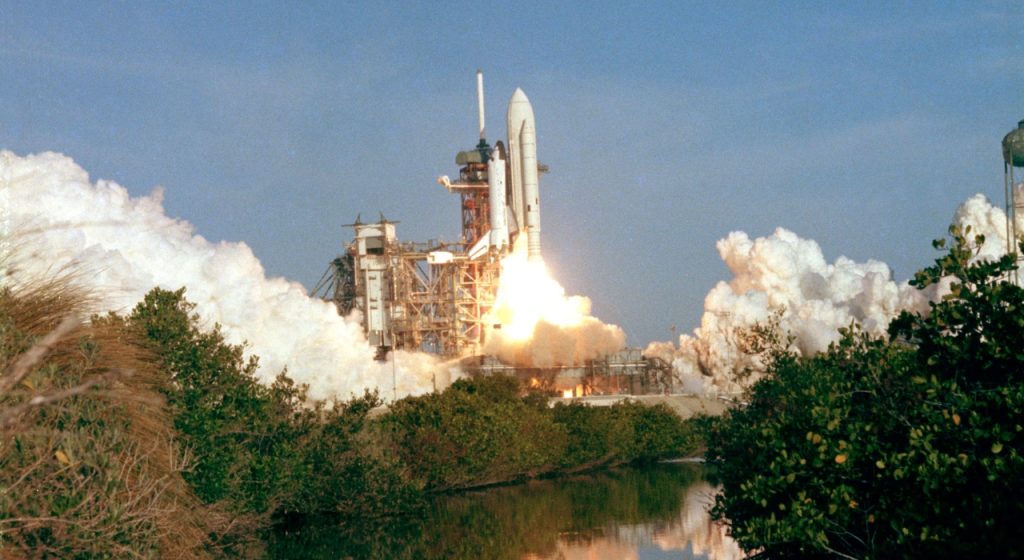The night sky offers a show unlike anything else. In this monthly series, we will explore some of the top viewing experiences for backyard astronomers.
Here are some highlights from NASA’s Skywatching report, as to what you can look forward to observing in the May sky!
May 1 – May 28 – Annual Eta Aquarid meteor shower
This month, look up to the night sky to witness the Eta Aquarids, which originate from the comet 1P Halley, and are most known for their speed. These meteors which peak during early May each year, travel into the Earth’s atmosphere at roughly 148,000 mph!
Their radiant, or point in the sky from which they appear and where they get their name, is in the constellation Aquarius. The Eta Aquarids appear to come from the vicinity of one of the brightest stars within Aquarius, Eta Aquarii.
Around 30 Eta Aquarid meteors can be seen in an hour during their peak.
Viewing Tips:
While the Eta Aquarids can be viewed from both the Northern and Southern hemispheres during the pre-dawn hours, the Southern hemisphere is preferred. In the Northern hemisphere, there is an hourly rate of only about 10 meteors per hour, and you will most likely see the meteors as “earthgrazers” which appear to skim the Earth’s surface.
To get the best view of this meteor shower, find an area away from city and streetlights. Lie on your back with your feet facing east and take in the show! It may take some time for your eyes to adjust to the night sky, but be patient. The meteor shower will last until dawn, so there is plenty of time to catch a glimpse of the action.
May 3 – Saturn makes an appearance
This morning, Saturn will rise roughly 8 degrees to the left of the Moon at 1:22 a.m. CT. Look to the east-southeast to witness this event. As morning twilight begins at 4:03 a.m. CT, Saturn will appear 7 degrees to the upper left of the Moon.
May 4 – The Moon forms a triangle in the sky with Jupiter and Saturn
Catch the Moon, Saturn, and Jupiter in a large triangle this morning in the east-southeast! At 1:17 a.m. CT, Saturn will rise, followed by the Moon and Jupiter, which will rise to the lower left of Saturn at 2:01 and 2:02 a.m. CT, respectively. Jupiter will appear roughly 10 degrees to the left of the Moon and the Moon will appear approximately 18 degrees above the southeastern horizon at 4:02 a.m. CT, when morning twilight begins.
May 11 – See Near-Earth Object 2021 GK1
Near-Earth Objects (NEOs) are comets and asteroids that have been nudged by the gravitational attraction of nearby planets into orbits that allow them to enter the Earth’s neighborhood. Composed mostly of water ice with embedded dust particles, comets originally formed in the cold outer planetary system while most of the rocky asteroids formed in the warmer inner solar system between the orbits of Mars and Jupiter.
The scientific interest in comets and asteroids is due largely to their status as the relatively unchanged remnant debris from the solar system formation process some 4.6 billion years ago. As the primitive, leftover building blocks of the solar system formation process, comets and asteroids offer clues to the chemical mixture from which the planets formed some 4.6 billion years ago.
In the afternoon, around 12:24 p.m. CT (with 12 minutes uncertainty), look for Near-Earth Object (2021 GK1), which will pass by the Earth at 1.5 lunar distances. It will be traveling around 4,500 miles per hour and measures between 33 and 74 feet across.
May 15 – Mercury is highest above the horizon
See Mercury reach its highest point above the horizon as evening twilight ends. Look for Mercury roughly 7 degrees above the west-northwestern horizon.
May 17 – Mercury at its greatest elongation
This morning, don’t miss Mercury at its greatest angular separation from the Sun (as observed from Earth), also known as greatest elongation. The planet will appear half-lit through a large telescope.
May 19 – Venus joins Mercury above the horizon
Beginning this evening, observe the planet Venus as it joins Mercury above the west-northwest horizon as evening twilight comes to an end.
May 19-20 – Regulus
Look below the waxing half-full Moon to see the bright star Regulus, which will set around 1:07 a.m. CT on Thursday morning.
May 23-24 – Spica
See the bright star Spica tonight to the right of the waxing gibbous Moon, roughly 7 degrees apart and separating throughout the night. Spica will set Monday morning around 2:52 a.m. CT.
May 26 – Closest full supermoon of the year
Don’t miss out on witnessing the closest full supermoon of the year! This morning, at 6:14 a.m. CT, there will be a full Moon. But this isn’t just any full Moon.
Since this full Moon takes place less than 10 hours after the Moon is at perigee (when it is closest to Earth in its orbit), it will be the closest supermoon of 2021!
The Moon will appear full Monday evening through Thursday morning.
Watch the video below to find out what constellations you can see in May. This video is produced by the Space Telescope Science Institute, home of science operations for the Hubble Space Telescope, in partnership with NASA’s Universe of Learning.
Spot the Station
Watch the International Space Station pass overhead from several thousand worldwide locations. It is the third brightest object in the sky and easy to spot if you know when to look up. Visible to the naked eye, it looks like a fast-moving plane only much higher and traveling thousands of miles an hour faster! Find out when you can spot the station.
For stargazing tips, explore our guide. To learn more information about May 2021 celestial events, visit NASA Solar System Exploration.







